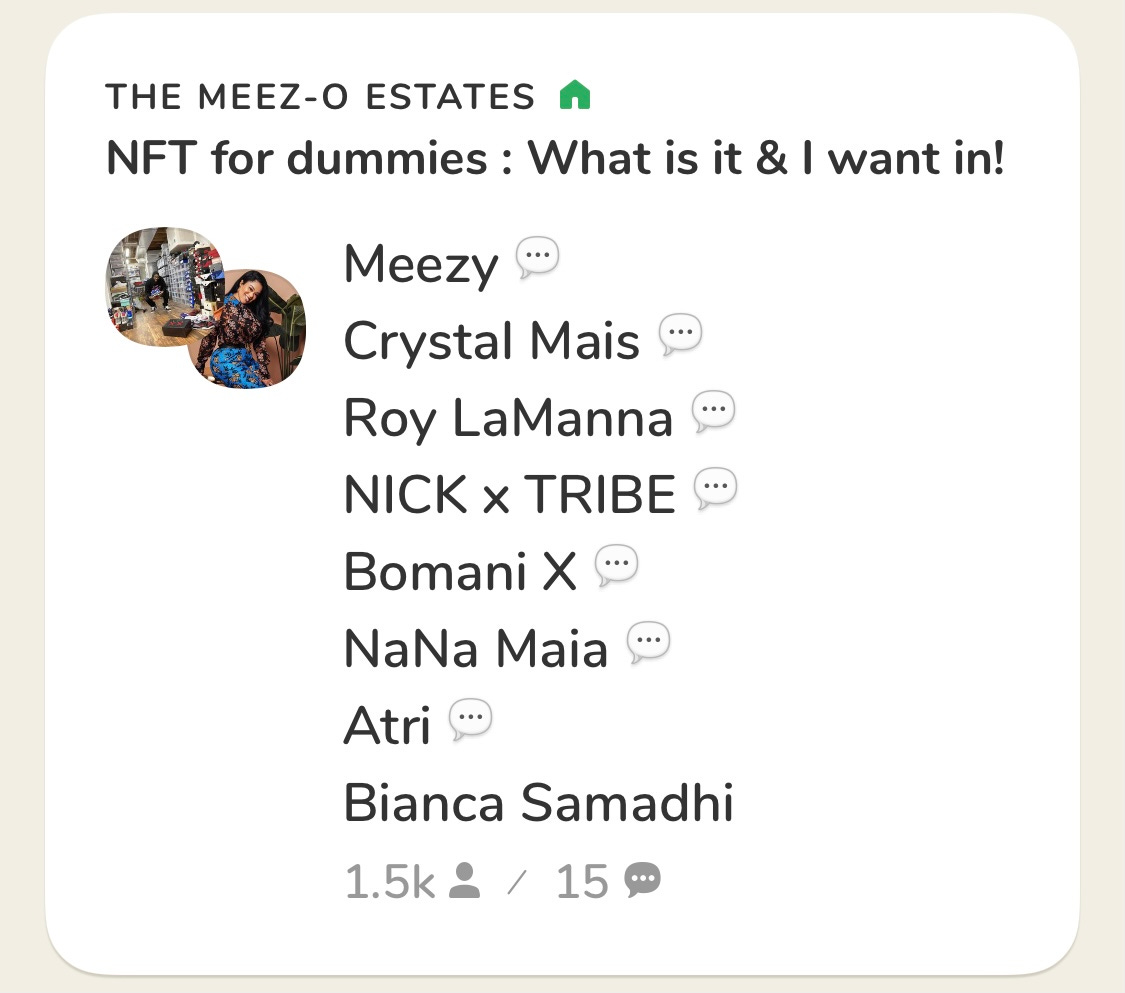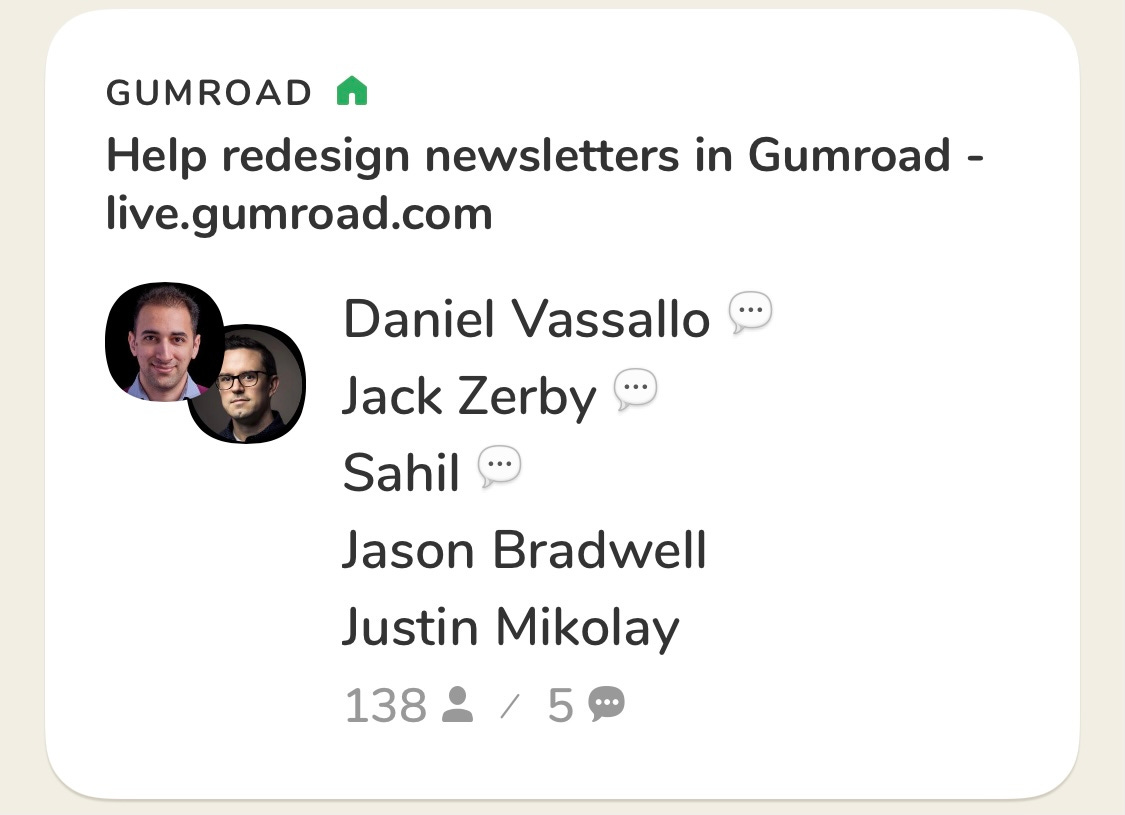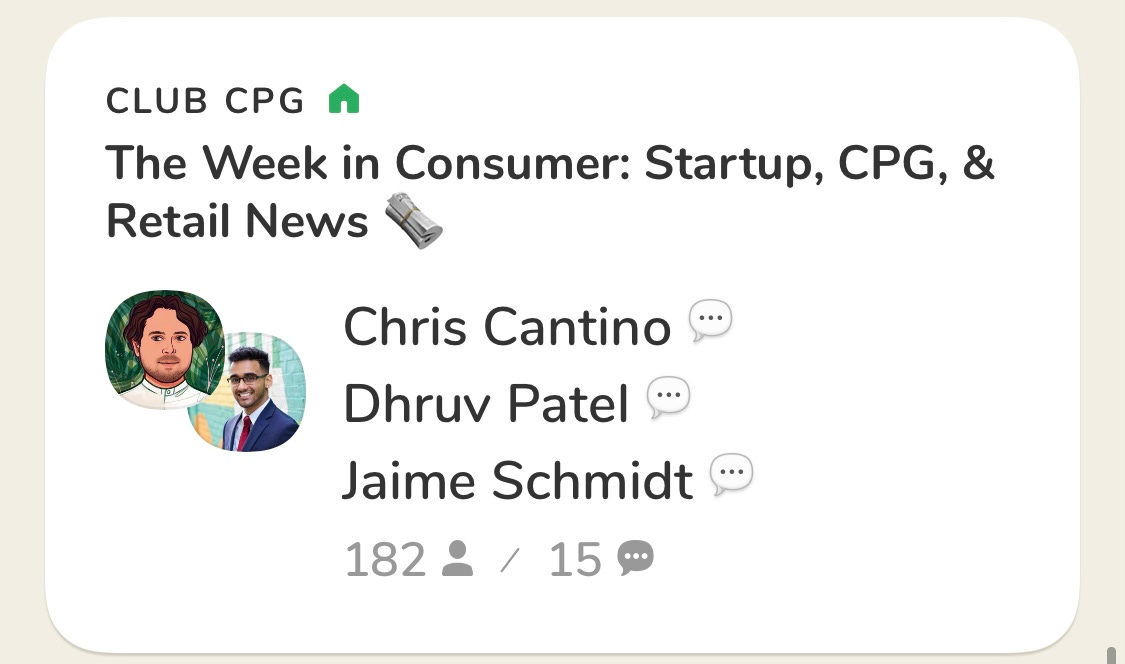🏠 5 Ways B2B Companies Can Use Clubhouse
Plus tips on how to host a great room and measure your ROI
Hi! 👋
In The B2B Bite, I break down the most interesting marketing stories into fun-size, actionable chunks to kick off your week.
Sent every Monday AM. Best enjoyed with coffee.
Sign up below for free.
Clubhouse
🗣 Let's Talk
Clubhouse is like a pineapple and olive pizza. You either love it or you hate it.
What you can't deny is just how bloody quickly the audio-only social app seems to have grown. It's been downloaded 8 million times since launching last year, despite remaining an invite-only beta and exclusively available on iOS.
I've been thinking about how B2B organisations can use Clubhouse - or Twitter Spaces - in their marketing. Why should they do this? I can think of three main reasons.
To capitalise on the momentum. Just under 5 million people downloaded it in the first two weeks of February - a crazy number, honestly - and they're hungry for content.
To stake a claim on an emerging platform. How many of your competitors are on there? Relatively few, I'd guess. My motto is that the time to strike is when the competition is light.
And because it's a great way to engage your audience that doesn't involve you talking 'at' them all the time. You can have a dialogue.
To be clear, it won't be for every type of B2B company. You should do your due diligence to understand if your target buyer is spending any time at all on the app.
But my guess is that if your company's interests touch areas like finance, technology or science, you'll probably have a home there.
OK, so how do you use it? I've had a noodle and can think of five quick-fire ideas you could get up and running quickly to test the waters.
#1. Dive Into a Hot Topic
Almost half (47%) of C-suite executives said they have shared their contact information after reading thought leadership. That's why so many B2B brands prioritise creating it through their marketing efforts.
Sure, this could be placing your CEO in a trade journal to spit wisdom on the hot button topic of the day. But that's putting your fate into the hands of another. Why not open up a weekly Clubhouse room, invite all your prospective clients and discuss it there instead?
#2. Interview a Client or Partner
When buyers are spending tens of thousands of dollars on a solution that will determine whether they have a job next quarter or not, they want the confidence that others have trodden the path before them.
That's why case studies are the bread and butter of B2B content marketing.
Clubhouse gives us an opportunity to riff on the idea of a conventional, written case study. Invite your client into a room to discuss the challenge they faced, the solution you provided and what tangible results came of it.
Bonus is that the people who attend will have an opportunity to drill into the details and ask follow up questions they wouldn't have the chance to if simply reading a document.
#3. Gather Feedback
So you've begun to develop a product or service that - I'd wager - solves a challenge for your target customer. The problem is that it can be costly to validate the magnitude of that challenge, determine which features to prioritise first for your MVP or figure out the best go-to-market strategy.
Clubhouse can be a phenomenal research tool. If your buyers are already on the platform, join the conversation! Soft pitch ideas. Invite feedback. The barrier to entry is nil. All you have to do is turn up and talk.
#4. Tell Your Founder Story
There's a reason your company exists. At one point your founder noticed a gap in the market and set out to fill it. They undoubtedly overcame some degree of adversity - and probably still do to this day. They'll have a vision of how the world is all the richer because the business you work for is in it.
Told in the right way, that's the kind of story people will lap up.
Invite a journalist or analyst to interview your founder(s) on the 'why' they're doing what they're doing. They'll add credibility to your efforts and ask the kind of interesting questions that will get people to attend - and, importantly, stick around.
#5. Cover the News
Finally, why not become a regular source of trade news for your customers? Take thirty minutes each week to recap the big stories from your industry on Clubhouse - obviously taking advantage of the opportunity to talk about what your company has been up to.
You're likely already reading the news on the daily. Just keep a note of the most interesting piece each day and share the aggregated list, inviting people to comment and discuss each one.
I've seen Matt Navarra, the prolific social media consultant, do a fantastic job of this on both Clubhouse and Twitter Spaces. He attracts hundreds of listeners each week to his recap of the biggest news across social networks.
But What About the Leads?
Not every activity needs to be about lead-gen - something I wrote about in a recent edition of the B2B Bite. But I get it. When budget and time is tight, you want to prove some immediate ROI from your efforts.
If your CEO is asking for results, consider the following:
Drop a CTA throughout your talk. Maybe it's a dedicated landing page with a piece of lead magnet content. Give your audience somewhere to go once you're finished with them on Clubhouse.
Give someone on your team the role of keeping an eye on the attendees. Make a note of familiar faces or leads and let your sales team know they attended so they can follow up. It's a blunt method, sure, but useful nonetheless.
Promote your event in advance with an RSVP-type landing page where people can submit questions they'd like you to answer during the chat. Capture their email there.
How Do You Host a Great Room?
Clubhouse is an interesting medium to explore but it requires a strong moderator from your ranks. Someone who can keep a nice flow to the conversation, make people feel welcome and quickly head off any signs of trouble.
So how do you host a good Clubhouse room? I asked Twitter and here were some of the best responses.






🥡 Takeaway
Clubhouse is not going to be a slam dunk for every type of B2B company. It requires a solid idea of what you want to get out of it, strong talent to host engaging rooms and, of course, evidence to suggest that your target customers hang out there (or could at least be persuaded to).
But with a low barrier to entry and the opportunity to engage in a real-time dialogue with your market, it's at the very least worth consideration as a channel in your content marketing strategy.
🍴 Nibbles
Alexa Heinrich has single-handedly taught me more about accessibility best practices in social media over the last twelve months than I've picked up in over a decade as a professional marketer. I highly recommend subscribing to her newsletter 'Accessible Social' for actionable tips on how to create a more inclusive online experience for everyone.
"Making friends is good for growth," writes Tom Bangay in his article 'How to Build a Community to Grow Your SaaS Company'. Why? Because people buy from people. Enjoyed reading this piece on Juro's journey to build an audience around its offering practical advice on how to get started - including convincing a leadership team it was the right thing to do.
…and here’s my podcast
Every two weeks I sit down with a marketing leader to lean how they hit their goals by thinking outside the box - and dig into how this can be applied to other B2B businesses. Here are a few of my most recent episodes.
🚨 NEW EPISODE 🚨
How to Use LinkedIn for More Than Just Lead-Gen w/ Charlie WhymanWhat it Takes to Build a Successful B2B Community w/ Christina Pashialis
Tell Me Why… You Need Pop Culture in B2B Marketing w/ Brianne Fleming
Building a 10,000 Strong B2B Email List from Scratch w/ Sean Blanda
You can also find the B2B Better on Apple Podcasts and almost all other podcast directories.
And that's it! See you next week.








Great piece, lot of your Clubhouse advice was on point. Didn't even think about the product feedback!